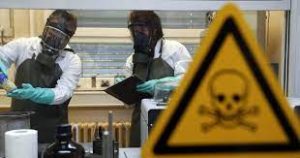What Are Biological Weapon?

Biological weapons use microbiological agents (such as bacteria, viruses or fungi) or toxins to intentionally cause death or harm to humans, animals, or plants.
Related Initiatives:
- The 1925 Geneva Protocol banned the use of biological weapons in war.
- India ratified the Geneva Convention in 1950.
- Subsequently, the Biological and Toxin Weapons Convention (BTWC), which entered into force in 1975 prohibited the development, production, stockpiling, acquisition and retention of biological weapons.
- India ratified this in 1974.
Biological Weapons Convention:
- It is a key element in the international community’s efforts to address Weapons of Mass Destruction (WMD) proliferation and it has established a strong norm against biological weapons.
- WMD is a weapon with the capacity to inflict death and destruction on such a massive scale and so indiscriminately that its very presence in the hands of a hostile power can be considered a grievous threat.
- Formally known as “The Convention on the Prohibition of the Development, Production and Stockpiling of Bacteriological (Biological) and Toxin Weapons and on their Destruction”, the Convention was negotiated by the Conference of the Committee on Disarmament in Geneva, Switzerland.
- It opened for signature on 10th April 1972 and entered into force on 26th March 1975.
- Members: 183 States Parties and 4 Signatory States.
- India is a signatory of the convention.
- It effectively prohibits the development, production, acquisition, transfer, stockpiling and use of biological and toxin weapons.
- It was the first multilateral disarmament treaty banning an entire category of Weapons of Mass Destruction (WMD).




